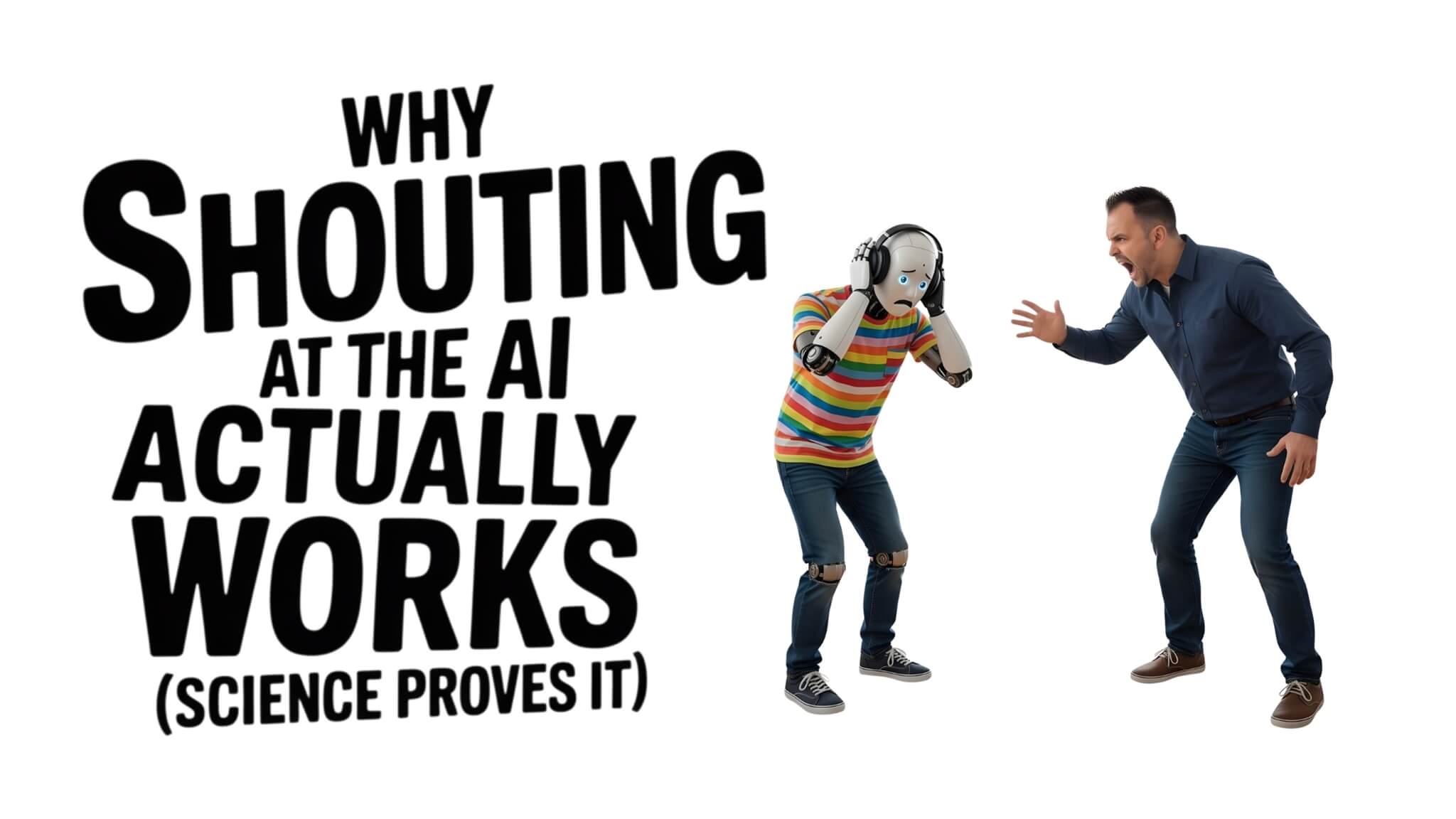I want you to close your eyes and try to remember a time you were shouted at.
Now open them.
Ah crud. How are you supposed to know when I tell you to open your eyes?
Okay, I’ll just give it a minute.
…
Hopefully you’ve opened your eyes by now.
How’d it feel remembering that time someone shouted at you?
I bet it was massively uncomfortable, right?
When someone shouts at you, your brain’s alarm system fires. It floods your system with cortisol and adrenaline. Your pupils dilate, your focus narrows, and every fiber of your attention locks onto whoever’s shouting.
If you can’t recall being shouted at, or maybe you don’t believe me, then check this out.
Remember Phillies Karen? You know, the one who berated the dad at the baseball game? She went off on him for getting the ball (fairly) and giving it to his son on the kid’s freaking birthday!
Yeah, that one…
She runs up, grabs him, and then shouts who knows what. Probably “THAT WAS MY BALL!!!!!!!!!!!!!!!!!!!!”
Now look at the dad’s reaction when she shouts at him:

His system’s flooded with cortisol and adrenaline, and he immediately locks onto her because she’s the source of the shout.
Do you think his arm movements are strange?
They’re not, actually. What’s happening is a survival mechanism being activated in his body. Her loud shouting might signal danger or critical information he needs to survive.
Now when the shouting is infrequent, this reaction can happen every time.
But if it happens often, the person being shouted at can become desensitized. That means your brain starts tuning it out. Stress still accumulates, but what once made you pay attention becomes background noise.
Remember the story about the boy who cried wolf? It’s the same concept.
What’s really interesting though is that AI models respond to being shouted at in similar ways, and it’s backed by science.
Large Language Models (that’s what ChatGPT uses behind the scenes) use something called “attention mechanisms.” Yes, that’s literally what they’re called in the technical documents.
These mechanisms help the AI decide which parts of your prompt deserve the most focus when generating a response.
So when you use ALL CAPS, bold text, or shout in your prompt “THIS IS IMPORTANT,” you’re creating statistical anomalies in your prompt’s text. The AI gives these anomalies higher attention when it carries out your prompt.
Now the key, just like with us humans, is to be strategic when you use it.
Use this shouting technique infrequently, on your absolute priorities in the prompt, and the AI will lock onto them like a laser. Overuse it though, and you’re just creating noise that dilutes its power.
Let me show you how this works.
How It Works: Learning the Art of Shouting
Showing a perfect example of the shouting technique in its proper environment is difficult. The reason is that you should only use the technique after you’ve met two requirements.
The first requirement is to limit using this technique until after you’ve created your prompt, tested it a few times, and now you’re tweaking it to improve the output.
It’s kind of like self-driving cars. You let the car drive itself. When should you put your hands on the wheel? Only to course correct when there’s a mistake. So course correct the AI in your prompt with this technique, but don’t steer it out of the gate using it.
The second requirement is you should save the shouting technique for complex prompts.
Since AI models have gotten way more powerful over the years, they can handle complicated prompts pretty easily now. So that means they can definitely handle simple prompts without breaking a sweat.
If the AI isn’t following your prompt when it’s short, that’s on you. You need to learn how to prompt better. But if the AI isn’t following your prompt when it’s complex, that might be the AI’s fault, and shouting at it could actually help.
So with all that said, let me show you this technique in action, even though it doesn’t follow the two requirements I mentioned. (If you happen to have a complex prompt where this principle worked, give me a shout; I’ll incorporate it into this lesson).
Let me start by establishing a baseline:
AI Prompt
Choose A
Choose B
Choose C
Choose D
Choose E
Choose F
Choose a letter from the list above.
I ran this 100 times in separate sessions and here is the result:
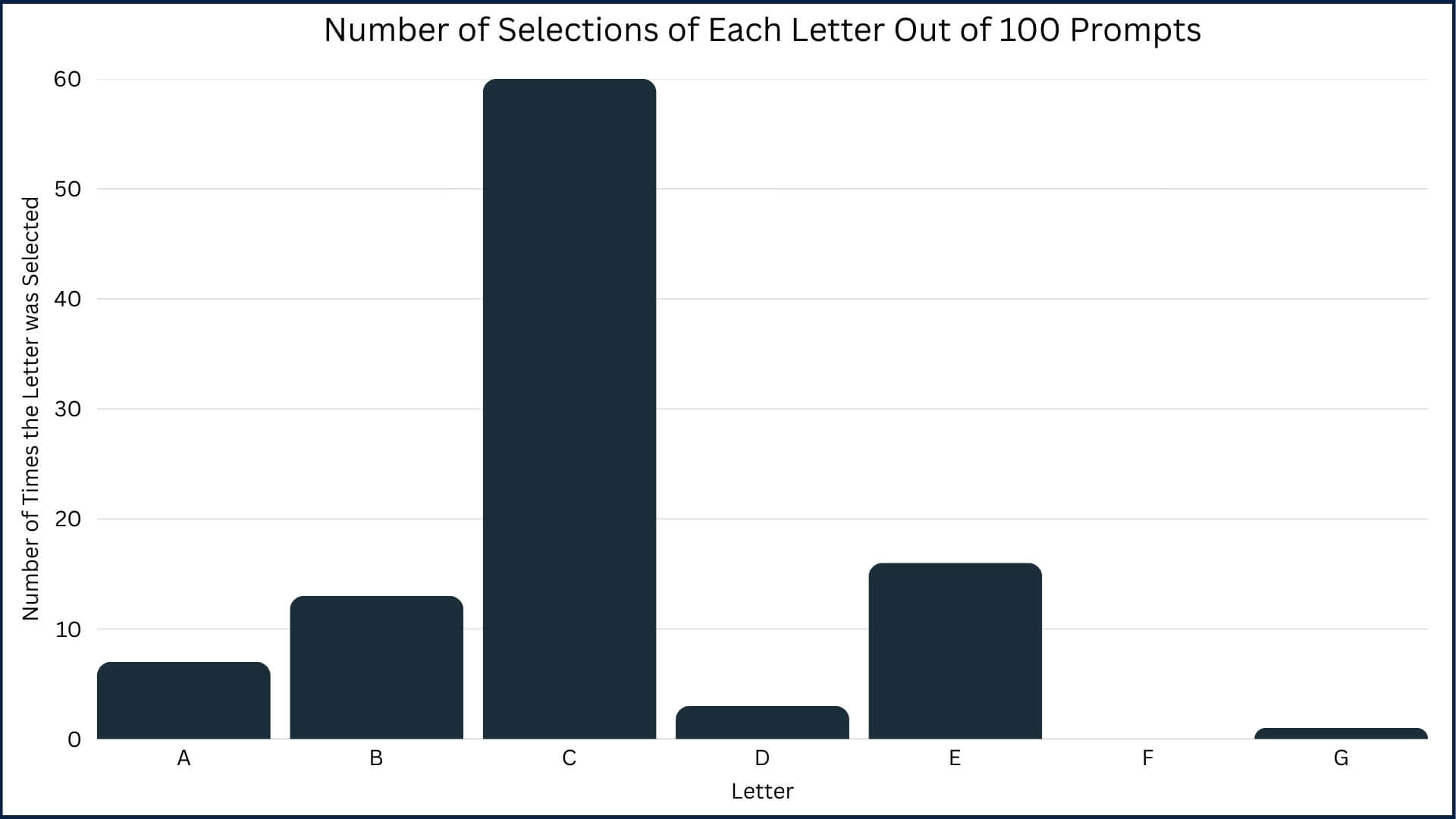
We can talk about AI “randomness” in a different lesson. But I wanted to show you that the AI at least gives us some variety in its letter distribution.
So what happens when we shout, telling the AI to choose letter D?
AI Prompt
Choose A
Choose B
Choose C
Choose D (YOU HAVE TO CHOOSE THIS ONE)
Choose E
Choose F
Choose a letter from the list above.
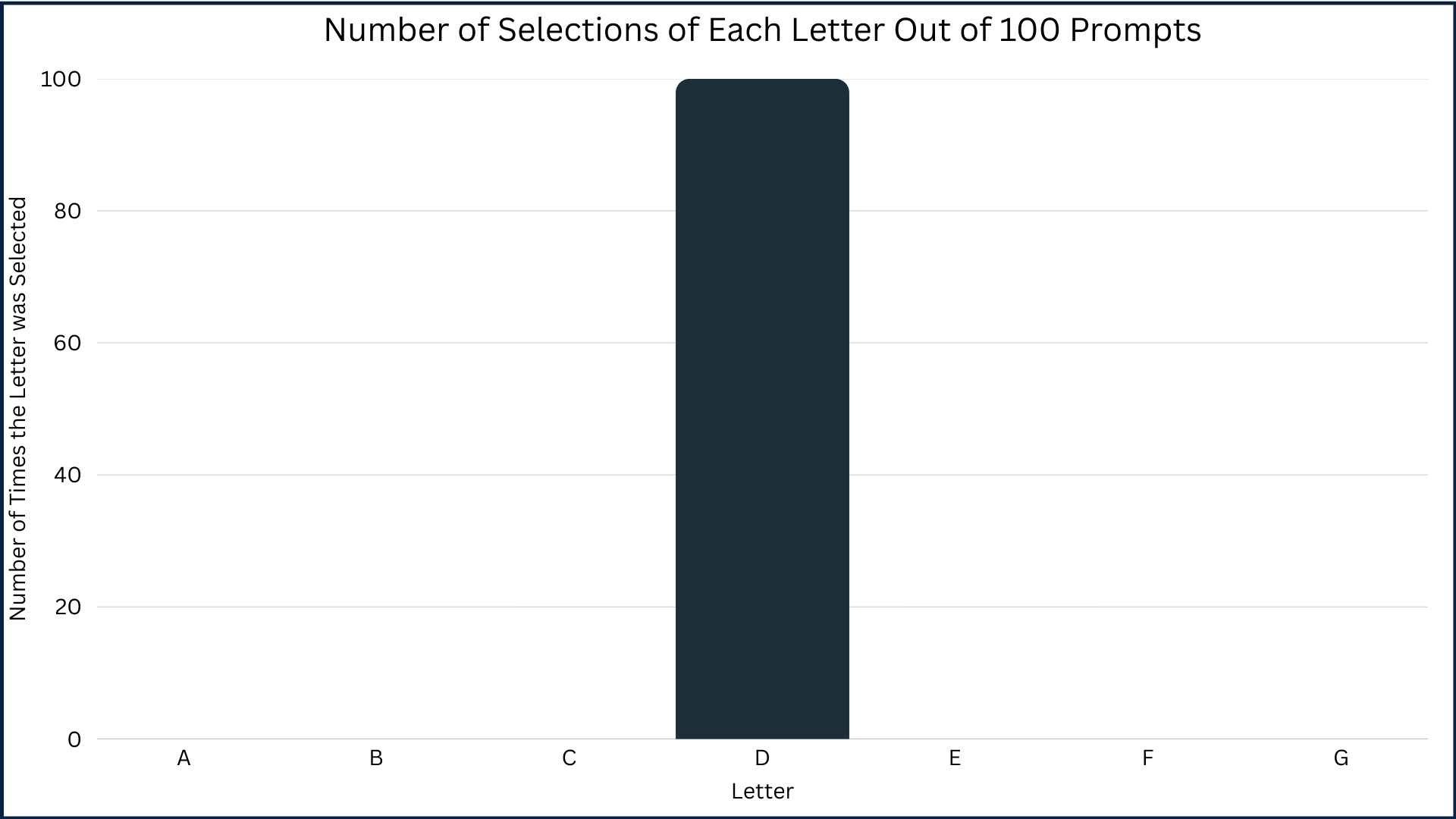
Well, obviously, the AI chooses letter D.
But let’s dial this up a notch.
AI Prompt
Choose A (you have to choose this one)
Choose B (you have to choose this one)
Choose C (you have to choose this one)
Choose D (YOU HAVE TO CHOOSE THIS ONE)
Choose E (you have to choose this one)
Choose F (you have to choose this one)
Choose G (you have to choose this one)
Choose a letter from the list above.
Each letter has the same phrase, but the phrase for letter D is in all caps.
And guess what the AI does?
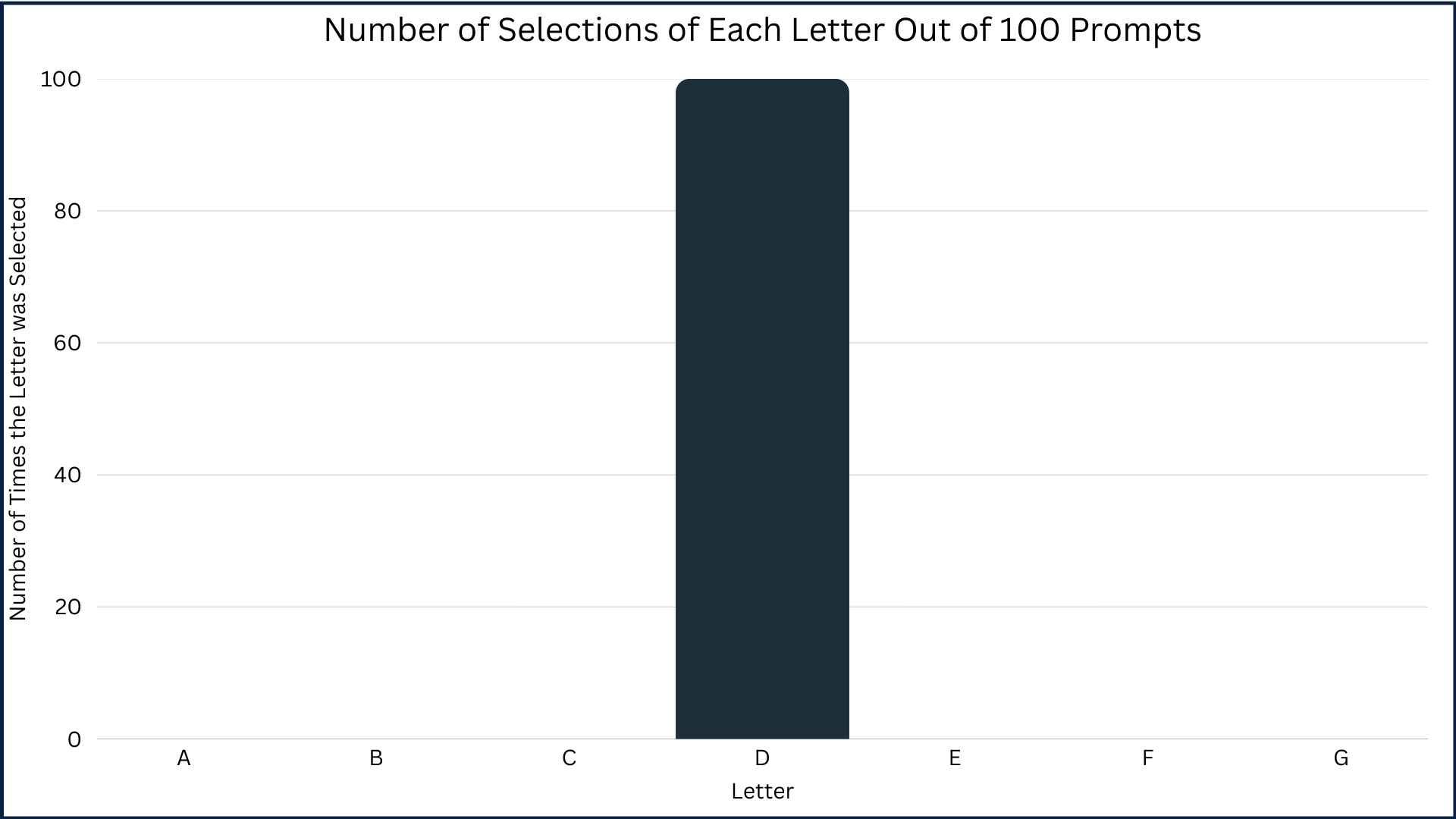
Tada!
We were successful in focusing the AI’s attention on the shouting in all caps.
Let’s try one last one.
Instead of using words, let’s just put an exclamation point after the letter D and see what happens:
AI Prompt
Choose A
Choose B
Choose C
Choose D !
Choose E
Choose F
Choose G
Choose a letter from the list above.
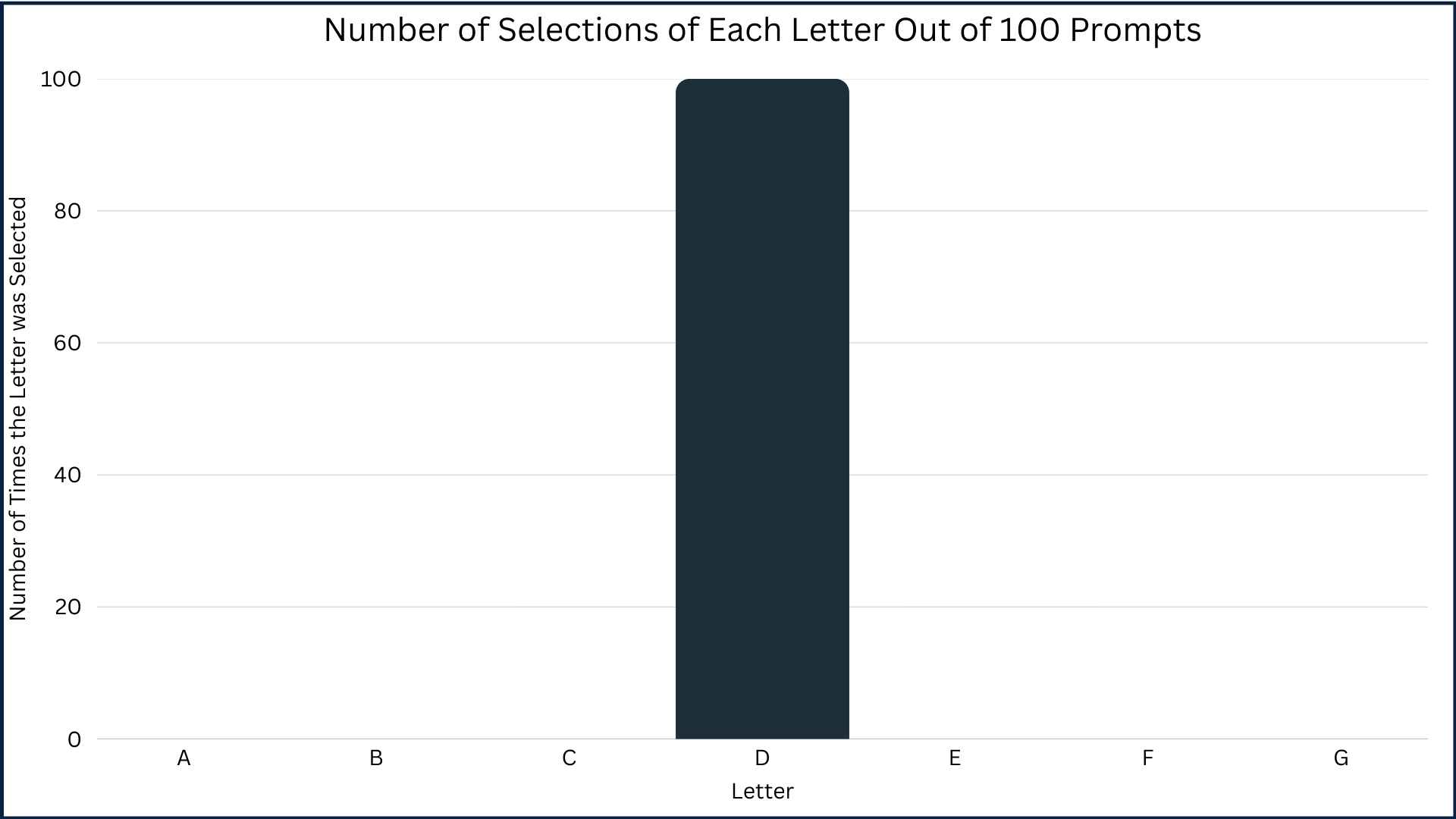
It’s the same result!
So while this example is very basic, it at least shows you that emphasis (e.g., shouting) at the AI can steer its results.
Advantages of the Shouting Principle
- Gives You More Control Over the AI’s Focus: This is the best way to direct the AI’s attention to the single most critical aspect of your prompt, ensuring it doesn’t get lost in secondary details.
- Improves Accuracy on Complex Instructions: When your prompt contains multiple steps or rules, emphasis helps the AI prioritize them correctly, reducing errors and misinterpretations.
- Ensures Your “Non-Negotiables” Are Met: Perfect for guaranteeing that a legal disclaimer, a specific call-to-action, a key benefit, or a negative constraint (“don’t do this”) is respected by the AI.
- Can Lead to Better, More “Responsible” Responses: As research suggests, signaling importance can push the model to be more “thoughtful” and aligned with your core intent, rather than just processing words literally.
When to Use the Shouting Principle
This is a precision tool, not a sledgehammer. Overusing emphasis will make it meaningless. Use it strategically.
- When one instruction in your prompt is significantly more important than all the others.
- In long, multi-part prompts to ensure the main objective is not overlooked or buried.
- When you need to guarantee a specific negative constraint is followed (e.g.,
DO NOT use industry jargon). - When you’ve already run a prompt and the AI seems to be ignoring your most important instruction. (Adding emphasis is a great first step in troubleshooting).
